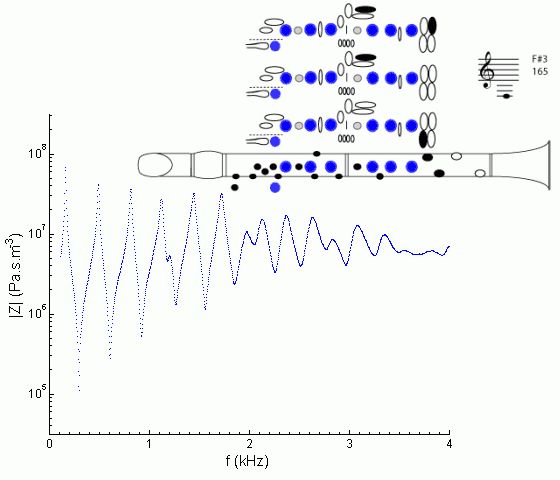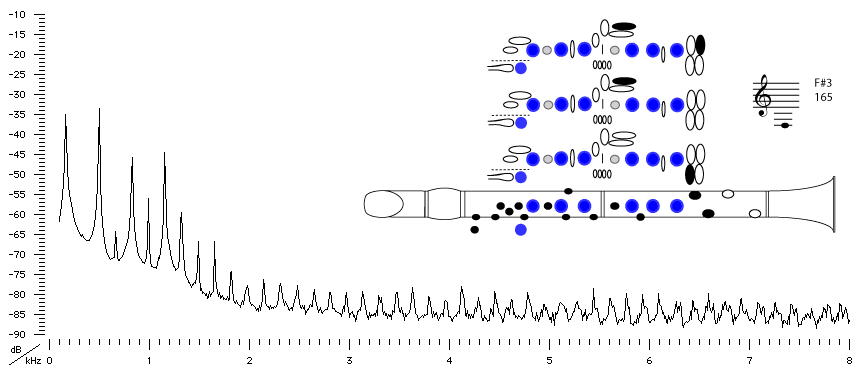| Acoustics of the clarinet |
Bb clarinet |
F#3 |

|
Fingering Acoustic schematic Non-specialist introduction
to acoustic impedance Notes are the written pitch. |
At frequencies below about 1.1 kHz, this curve looks rather like that for E3 or F3, but raised in frequency because the tube is effectively shorter because of the open tone holes. At higher frequencies, however, the waves propagate past the open tone holes with greater ease, and the situation is more complicated, which gives rise the the irregular shape around 1.2 kHz.
For general comments about the chalumeau register, see E3.

Sound spectrum
of a Bb clarinet
played using fingering for F#3.
For more explanation, see
Introduction to clarinet acoustics
|
Contact:
Joe Wolfe
/ J.Wolfe@unsw.edu.au |